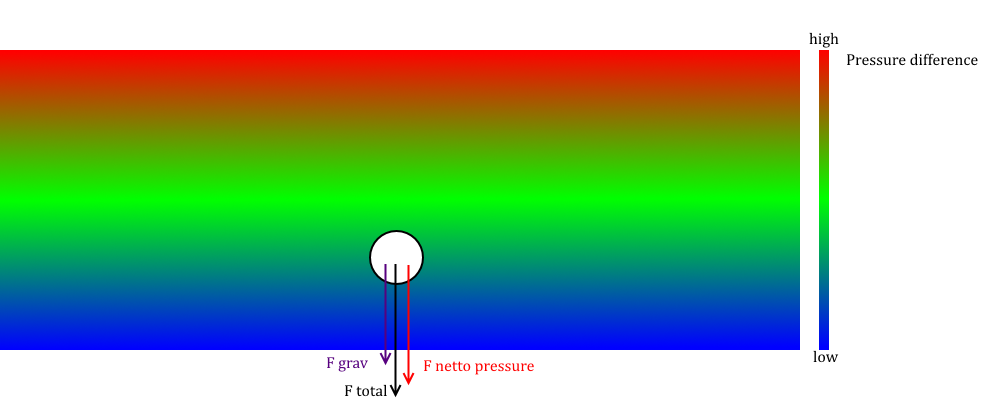I'd like to start from mathematical description of the following process. At the end of my post I will give you a qualitative explanation.
Mathermatical description of the motion in frequently oscillating field
Actually, the problem you state can be generalized to the following one:
Suppose you have a particle that moves in some force field that oscillates frequently in time. One can write the force, acting on the particle as follows:
$$\mathbf{F}(\mathbf{r},t)=\mathbf{f(\mathbf{r})}\cdot \cos(\omega t)$$
Note, that the amplitude of oscillations depends on the position - in is a key feature.
The question is to find out what the motion of that particle looks like, if the frequency of oscillations is very large.
The theory of motion in such a field is a well-known (and solved) problem. The detailed solution can be found in the following book: Landau, Lifshitz: Course of Theoretical Physics, Volume I "Mechanics" in paragraph 30. I won't retell you the calculations from the book in detail, but I will say several words about the result obtained there. Using some tricky math authors find "averaged" equations of motion for a particle in this case. This equations do not contain rapidly oscillating terms.
To be more exact, it is shown that instead of oscillating field one can introduce constant (in time) field with effective potential:
$$U_{eff}=\frac{\mathbf{f}^2(\mathbf{r})}{4m\omega}$$
Here $\mathbf{f(\mathbf{r})}$ is amplitude of oscillating force. As you can see, if $\mathbf{f(\mathbf{r})}=const$ this effective potential is constant. Thus, there is no force in average, that acts on the particle. If the amplitude is not constant, then potential of this force is minimal there were $\mathbf{f(\mathbf{r})}^2$ is minimal. Thus, this forces pushes the particle to the place, where the amplitude is low.
In your case this force field is associated with pressure.
Your problem can be treated in one dimension: there is pressure $p(x,t)=p_0\sin(kx)\cos(\omega t)$ that results in force $F(x,t)=-V\frac{\partial p(x,t)}{\partial x}=-Vkp_0\cos(kx)\cos(\omega t)$ (this is Archimedes law), where $V$ is the volume of a droplet. The effective potential, induced by the pressure field is:
$$U_{eff}=\frac{V^2k^2p_0^2\cos ^2(kx)}{4m\omega}$$
So, the total potential energy (including gravitational one) is:
$$U=-mgx+\frac{V^2k^2p_0^2\cos ^2(kx)}{4m\omega}$$
If the pressure amplitude is large enough, there are points of local minimums - equilibrium positions for droplets! (on the picture you can see illustration of this fact; it is potential enery against distance in some units; the average negative slope is associated with gravity and minimums are associated with pressure)

Qualitative explanation
But yet: how can one understand this result qualitaively?
The explanation is as follows:
Suppose your particle moves around in vibrating pressure field in some way. It is quite clear that one can express the position of the particle (as a function of time) as follows: $x(t)=X(t)+\delta x(t)$, where $X(t)$ is smooth function and $\delta x(t)=-A\cos(\omega t)$ is small deviation that happens in antiphase to the field's oscillations (as always for excited oscillations with no friction). Imagine that your particle is now in the region of non-constant (in space) oscillating force and amplitude of this oscillations is higher in front of the particle and lower behind it. As was mentioned, $\delta x(t)$ happens in antiphase to external field, thus, when $\delta x>0$ the particle is pushed back and when $\delta x<0$ the particle is pushed in front. However, external field is higher in the region where $\delta x>0$ and lower where $\delta x<0$, so the total impulse over the period will be directed in the region of "weak" oscillations.
That's it. If you want, I can explain something in more detail.
PS: Sorry for my language, if it was a problem.




